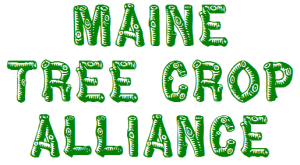Spend some time here PLEASE. Learn something about these PESTS!
SAVE YOUR TREES FROM DYING!
Sure enough, not everyone’s trees will be affected by RHATB, but if your tree becomes a “host” for these larva, you’ll need to begin:
THE SEARCH PROCESS: Go low—you will need to get down on your hands and knees. Start looking at the soil line or slightly below. Move any grass next to the trunk aside or remove it. You will need a clear view.
Using your hands and perhaps your fingernails, or the tip of a knife, begin looking for soft, spongy spots. Search up the trunk.
THE EXTRACTION PROCESS: Begin digging these spots with your knife, (Michael Phillips uses a spade bit) aiming to follow any vertical tunneling and hopefully arriving at a spot where the tunnel continues up or heads into the center of the tree.
THE SKEWERING PROCESS: With a fine but stiff wire, you should be able to poke into the tunnel. Here you may feel a squish or, if you make a small barb at the wire’s end, may be able to pry out a larva,.
KEEP UP THE SEARCH: There may be more than a single borer in your tree. (I have found up to 7, but others have topped that). The season for this crucial activity can begin early summer and continue until late fall. Larva can reside in your tree’s trunk for up to two years! Aggressive digging and removal of borers may set your trees back, BUT, it will allow them to live.
TELLTALE SIGNS: Rampant borer activity can result in poor anchorage. Can you easily rock your trees back and forth, and do they feel rather poorly rooted? It may be from the activity of these critters.
Do your trees look like they are declining in health? Stunted growth may be apparent. The appearance of leaves in late Summer looking more like late Fall could mean that your tree is not going to recover.
Some people NEVER experience borers. For others it’s a dreaded problem. Act while you can. SAVE YOUR TREES.
For suggestions on control, ways to highlight their activity and additional info go here:
- https://www.groworganicapples.com/organic-orcharding-articles/apple-tree-borer.php
- https://waldenheightsnursery.com/soils-plants/removing-a-borer-from-your-tree/
- https://extension.unh.edu/resources/files/Resource001830_Rep2590.pdf
And finally:
This close-up photo of an adult RHATB should not deter you from your mission https://www.ephotozine.com/photo/round-headed-apple-tree-borer-57650726

